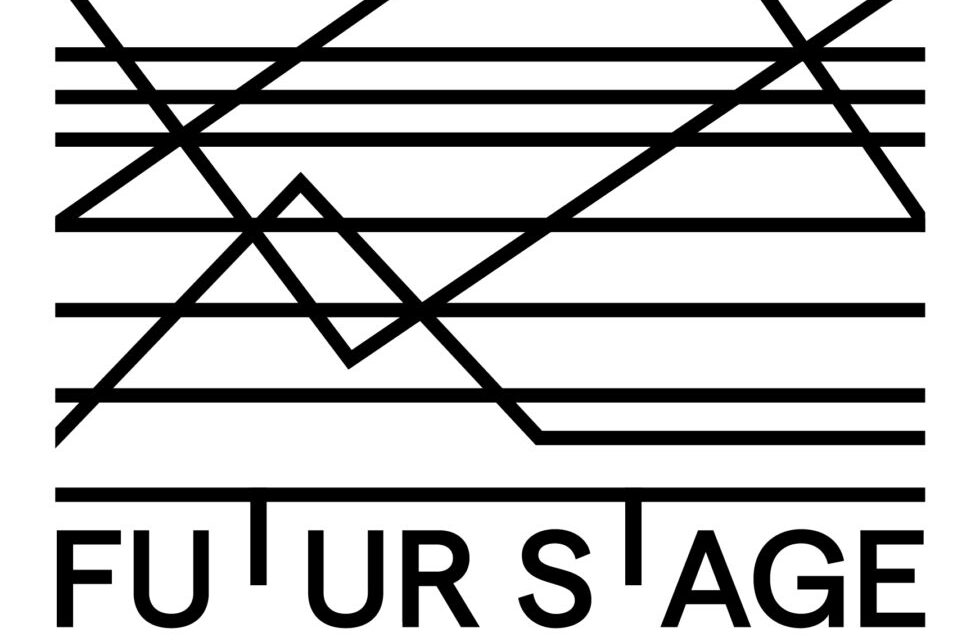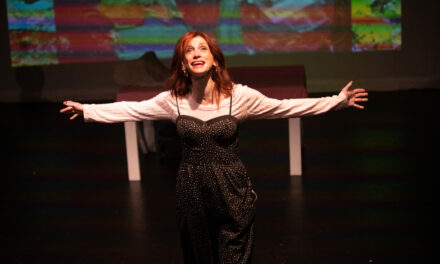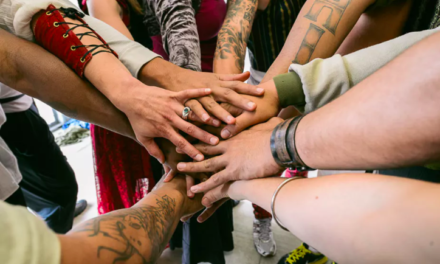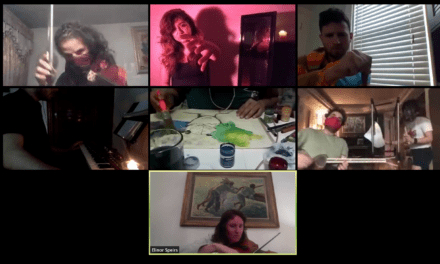On November 20, 2021, TheTheatreTimes.com published futureStage Manifesto, developed by futureStage Research Group at metaLAB at Harvard, a group of 40 leading thinkers in performing arts. The Manifesto was “animated by the ambition of transforming the post-Covid ‘return to normal’ not into a return, but instead into an opportunity to reimagine the future of the performing arts.”
This is Ilinca Todorut’s response to the Manifesto.
The metaLAB futureStage Manifesto begins by identifying performance as a human right on the basis of its satisfying a human need to get together and to do things together, and of our self-worth and satisfaction being so dependent on mutual recognition. Most of us still feel the need to relate to other people, to interact with humans, not just through the things and structures we create but directly, physically. The collective of writers that penned the Manifesto has been careful to articulate that they’re not explaining how technology can replace live theatre but how it can co-create, promote, innovate, make accessible, archive, support artists, and enrich live theatre practices. The idea of “liveness plus” that the collective propose helps liveness to live a fuller, more equitable, more sustainable life, similar to how a mechanical prosthetic limb may help an organism live a fuller biological life. It’s not about what technology can remove but about what it can add. How can we employ existing technologies to build vital theatres for our communities? How can we create and nourish a public formed for the benefit of a diversity of individuals and communities along the whole spectrum of ages, genders, nationalities, races, abilities, and social classes? These are huge questions about relevance, accessibility, sustainability, decolonization, and equity whose answers cannot be limited to technological factors.
My favorite parts from the futureStage Manifesto highlight just this, the impossibility of using technology in the arts on a large-scale positive way without addressing the economic, financial, institutional, political, cultural inequities and injustices structurally lodged into our societies that seep into and misshape performance practices (along with everything else). The authors caution that the potential of the digital to democratize theatre production cannot be achieved “without fundamental changes to existing models of ownership and revenue generation. […] And also not without addressing the profound asymmetries that exist between nations, regions, and generations when it comes to access to broadband, asymmetries that compromise the future of the performing arts.” I’d have liked more expansion and elaboration in the Manifesto of just these crucial parts. But I also do understand that the metaLAB has its technology-foot forward, and who can write in-depth about the mind-spinning ramifications of real change within the succinct form of a manifesto? As a manifesto, the futureStage one performs well: it challenges and demands; it proposes, inspires, and calls for action. It also charges us all to think and elaborate on the many pieces of the puzzle it touches upon, from theatrical labor and employment opportunities to funding models.
So I will elaborate on one aspect. I see mechanical and digital tools as value-less, amoral-in-themselves things that can be used in their turn for good or for bad. (From the category of “neutral tools,” however, we must exclude current social media models, which are designed from the start to get something from us, to extract our time, as tech ethicist Tristan Harris explains in the Netflix documentary The Social Dilemma). Tools are useful, and it’s usually a shame not to take advantage of the creative potential lying in wait within all sorts of cool technologies we can play with. But I’m also wary of fetishizing technology. I do not think that the solution to all our problems will come from new scientific discoveries, new gadgets, new drugs, new software. We’re on the brink of environmental collapse, and no technological breakthrough in recycling, energy production, outer-space colonization can save us without us also overhauling our economic and political systems, institutional and social modes of organizations, and underlying mental frameworks feeding into collective values, attitudes, and behaviors. Sure, technologies of making and doing play an important part, but they are just one piece of a larger puzzle. I’m also wary of too-facile equations of anything digital with ecological awareness, as if a whole giant industry really does float immaterially in “the cloud” and is not dependent on massive-scale gadget production, huge energy consumption, and leviathan servers bathed in small oceans to keep their temperatures down. I can’t be sure that any kind of transportation of touring artists leaves a bigger carbon footprint than any kind of performances packed as data moving across the world. Or, to address this aspect from a different angle: do we care about who makes our state-of-the-art eco-friendly technology, and how? If a certain technology does help create more equitable practices in a North American or European theatre community, should we talk about how it’s being made in hellish, exploitative conditions of workers in a factory across the globe?
I will not cheerlead technological changes for the sake of mere glitz and glam (neither does metaLAB), and I will warn against foolish chases for the newest, coolest gadget merely to assert supremacies. Capitalism runs on technological innovation. It drives sales by promising lifestyle improvements. It imbues the latest fashions and newest products with social prestige. It’s easy to cheer on innovation and new technologies because it is our current mental default, naturalized through the constant influx of commercial and political publicity. In her book Potential History, filmmaker, curator, and photography theorist Ariella Aïsha Azoulay writes brilliantly about the violent discourse of the new weaponized to eradicate cultures and populations, and highlights instead efforts of preservation, nurture, upkeep, and resistance. You can use technology either to preserve or to destroy, to support or to sap, to help people or to make money. And as long as there are such astronomical sums of money to be made off the digital world in an economic, social, and political system geared towards profit-making, I fear that little good can come of it. Artists busting their backs to enlarge publics will work for nothing, when their efforts will be hijacked by businesses who see the increased accessibility only in terms of a market expansion. I think this is what the Manifesto is trying to warn against with the injunction to “own the stream” and a stated need for a “redistribution of both actual and symbolic capital,” although it doesn’t seem very clear to any of us how exactly we can take possession of what we do and the tools and means of production with which we do it.
The hijacking scenario has already played out again and again. The internet holds such promise for a de-hierarchization and democratization of information and communication. Yet while we can indeed reach each other more conveniently, and the internet is a treasure trove of digital archives and wondrous things that individuals and collectives make and share online, tech businesses and entrepreneurs make fortunes from collecting and commodifying our data or spreading misinformation. Instead of a tool for building communities, the internet currently plays an even bigger part as a profit-making tool contributing to social disintegration. Almost a hundred years ago, Bertolt Brecht got very excited about the wireless of his time, the radio, seeing in it a technology that could help reach a wider public and activate it towards a communal practice. He devised radio projects such as The Flight of the Lindberghs in which radio listeners were supposed to join in the singing of songs by a live orchestra at the radio station and even utter some lines together (Matthew Wilson Smith has an excellent chapter about this project in The Total Work of Art). The radio became a key means by which Hitler reached an audience to spread fear, hate, bizarre theories, racism, nationalism, and war-mongering. More recently, Facebook has been instrumental in orchestrating the Rohingya genocide.
We shouldn’t lose sight of the depressing instrumentalization of technology for purposes of piling up money and dead bodies, although over-stressing it may not be helpful in figuring out how to achieve its other, positive potential. Written during the pandemic, the metaLAB Manifesto was inspired by the brief glimpse at the untapped potential of technology in performance practices to widen accessibility, promote sustainability, and usher in greater equity. The live entertainment industries have been some of the most badly hit during restrictions to congregate, and none have been hit harder than the independent contractors and freelancers, from performers to technicians, that make up such a high percentage of workers in these industries. Thus, it feels wrong to even talk about benefits for the performance arts, since they haven’t put much food on anybody’s table. But it’s also hard not to note a certain effervescence on our laptops. Over the course of a few months I watched more shows than I had over years of pre-pandemic time. I gorged on recordings and live streams shared by theatres and artists, I finally saw old and famous productions I previously couldn’t afford, I discovered a bunch of new artists and amazing shows just clicking through the collections and digital archives that became open and free for limited periods. From the theatre-makers’ perspectives, being exposed to such a diversity of productions and aesthetics must be inspiring and could feed waves of creativity to come. Plus, there were many theatre festivals happening online! Plus, the creativity of artists led to a wonderful spread of Zoom productions and YouTube shows, accelerating the development, recognition, and consumption of hybrid forms. Plus, I finally got to participate in conferences, talks, exchanges that were previously completely out of reach for me from the distance of my current residence in China. In a significant and impossible-to-ignore way, I have never felt more connected to a global theatre community. I don’t think I’m the only one who has experienced this, especially among potential publics that want to experience the theatre but can’t. There are those of us who are geographically far away, whether in a different country, or in a rural area, close by but still far from nearby artistic urban centers. There are those of us with mobility issues, whether because of old age or a temporary or lifelong disability. There are those of us who can’t afford the price of a ticket. There are those of us who can’t afford not working or not being on call for the duration of a show, like the women bearing the brunt of domestic duties and child-rearing. There are those of us who would actually enjoy seeing a show, if not for the classism, elitism, or racism of some art communities. A significant part of these population segments don’t have access either to the devices or to the infrastructure that made possible my remote connection to the theatre, a crucial issue the Manifesto also highlights. But overall the digital and cooperative practices throughout the pandemic enlarged the public, a fact which should encourage us to consider how we can maintain and further invest in these efforts towards wider accessibility and greater inclusion. Many of us are by now sick of screens and can’t wait to return to live theatre. But if we do so too hastily and we just go back to a dichotomy between live and streamed, we risk not learning the lessons of the pandemic. With the means that we have at our disposal, there are few good-faith excuses that can justify the exclusion from artistic, academic, or other community events of those deemed too poor, too old, too foreign, too rural, too disabled, too uneducated, too colored, too uninterested, too busy with other duties. It’s true that large access projects require initiatives on the national and international levels, and their creation can’t be dumped on the shoulders of artists and artistic institutions, many of whom subsist precariously. But the latter bear some responsibility too. Cultural management consultant Anthony Sargent’s report titled Covid-19 and the global cultural and creative sector: What have we learned so far? details the pandemic responses with both positive and negative impacts. Substantiated by data, the report highlights cooperation projects and accessibility models, and it synthesizes the problems confronting performance arts institutions around the world, such as the lack of communication with policymakers who often don’t understand the organization and labor conditions within the arts or the social services the cultural sector provides.
The Manifesto rightly asks us to take even further steps. Streaming and live-streaming can increase accessibility, but they pertain merely to the phase of distribution, of more widely sharing a product already made. But what would it mean to enlist the help of technology to increase accessibility and equity, not just in the final phase of distribution but from the very beginning of the process, from the stage of production? The Manifesto points out how this would entail changes in the architecture of workspaces and theatre buildings, changes in the very ways in which performance directors conceive of making a product. The Manifesto attempts to give some concrete examples, but they remain rather vague, for the simple fact that they are exercises of imagination since such theatres don’t really exist yet. And what if instead of looking for ways to bring a theatrical product to those who have no access to it now, we try to reach towards those people and find ways to support them in the creation of their own theatres? How should we fight not just for access in consumption but also for wider access to the means, knowledge, and skills of production? What if we looked even earlier, at the stage of training and apprenticeship of performance workers, as the Manifesto encourages us to do? It would mean finding ways to enlist a wider diversity of students, coming from all walks of life. It would mean a much higher degree of interdisciplinary subjects and collaborative training methods within theatre schools, where the delineations between different roles (say, actor and director, designer and dramaturg) would become more fluid and de-hierarchized, and where everyone would become more adept at working with technology.
In theory, I find all this wonderful. In practice, I come back again and again to the many possible ways in which our best efforts will be perverted by the market and by the need to generate profit. Yes, digital training and increased self-ownership over what and how an artist can contribute to a collective work has numerous benefits. But think about what a cool invention email is, how conveniently it lets you stay in contact with the people you like. And think how much and how many of us have come to hate our inboxes because they make incessant work demands of our time, extending our work hours into every fiber of our existence. Now imagine how in a profit-driven enterprise (all our current theatre institutions?) a theatre worker who’s been trained in acting, running code, and programming lights will likely be asked very nicely to do all those tasks. Why pay three workers when you can ask one worker to do the job of three? And pay her the salary of one, of course.
Or take the Manifesto’s mentioning of the use of NFTs in a paragraph discussing innovation in financing and intellectual property rights. NFTs, or non-fungible tokens (isn’t there a linguistic contradiction in this very term?), are digital assets called “tokens” because their units of data merely link to bits of visual or sound content stored somewhere else on a blockchain. For digital artists, NFTs can help them monetize their digital works without intermediaries, since while an NFT can be freely accessed and distributed online, each NFT has a unique digital signature on the blockchain that also keeps a record of the ownership transactions. In an article for Wired magazine, theatre scholar and lawyer Jessica Rizzo illuminates the real-life quicksand of legal rights, dissemination, and appropriation, when it comes to digital art. By owning an NFT (and some NFT visual art pieces or tokenized videos and tweets have been sold for thousands and even millions of dollars), you don’t actually own anything besides some bragging rights and buy-in to the world of financial speculation. Rizzo talks about the crypto group Spice Dao’s disregard for copyright in their intention to convert into NFTs Alejandro Jodorowsky’s production book for Dune after they bought a copy of it for the whopping sum of $3 million. Owning a copy of the book doesn’t give anyone copyright over the book itself. Just today, as I’m writing this, I read the news written by Elizabeth Howcroft that Cent, one of the biggest NFT marketplaces, closed down because of its inability to control the surge of counterfeits and plagiarized content. This is all to say that the terrain is slippery to say the least, and while it allows artists to get more ownership over their work and bypass the exploitative fees of intermediaries like art galleries, it also invites financial speculation that can deprive artists of rights and fair pay.
The changes that metaLAB envisions in training, production, and distribution would require many regulations, and even more funding to attain beneficial results. Just the necessary equipment itself is very expensive. Affordable ticket prices, or free entry to ensure equity and accessibility, require big, sustained subventions. Building new theatres with new architectures and remodeling old ones need massive financial investments. For these financial reasons, the Manifesto stresses the importance for the arts of receiving significant public funding, reinforced by private funding, the latter being declared “more welcome than ever.” While I wholeheartedly support more public funding for the arts, I fail to see how a private investor would funnel money into something that’s not one way or another financially profitable, the only “genuine value” recognized by commercial agents. We cannot replicate today the social conditions in which a wealthy person would fund theatre merely for social prestige and political publicity (without investing in anything, not even an NFT), as the ancient Athenian choregos did for the play productions in the City Dionysia. Hence, in our economy you cannot claim that performance is not a commodity when you simultaneously court private funding.
Art products are taxed under the category of luxury goods first of all because most of them are literally luxury goods in the current economic system, meaning products that can only be bought, accessed, and consumed by people with significant disposable income. Second, everything in our world that does not produce marketable value has become a luxury, just like taking a vacation or taking maternity and paternity leaves have become luxuries not many of us can afford. If we want to maintain that performance is a human right—which we indefatigably must do—then we need to fight for a world that resists commodification in all aspects of life that shouldn’t be marketable, a world that operates with different concepts of value, a world where human rights don’t just refer to symbolic rights. Basic biological needs constitute human rights: the right to (clean) air, (potable) water, (non-poisonous) food, shelter, health care. Basic social needs are human rights: the right to education, free time, performance. As human rights, none of these should be commercial goods, and all of them should be widely accessible to all. We have the material means and the technology to achieve this (which is why I don’t think such questions are primarily a question of technology). There’s serious talk today about the feasibility of a universal basic income, a living wage automatically given to every citizen of the world (not just to Scandinavians, if you’re wondering) that covers all basic human needs. In the short term, I understand why it’s important to find ways, for example, for an artist to monetize their digital works so that they can pay their rent. But in the long run, these approaches won’t make a big dent in solving the alarmingly precarious financial situations that many artists (along with other essential workers) find themselves in. A more inclusive vision would fight for a basic wage given to all artists (and all other people) who then can choose to disseminate their works and projects in any way they deem fit: online, in a gallery, in a public square. No one today would go hungry or die from a treatable disease if someone else wouldn’t be getting unimaginably rich from denying access and hiking up the prices to necessities. Performance, too, can be freely accessible (free or at an affordable price, depending on the type of works and the artists’ choice), but only in a world where all the other basic needs are non-commodified and widely available also. There should be no profits made from human rights. Art production should exist outside the commercial market. A lobbying for greater accessibility, equity, and sustainability in the arts entails joining the efforts for increased accessibility, equity, and sustainability in all the fields pertaining to basic human needs.
This post was written by the author in their personal capacity.The opinions expressed in this article are the author’s own and do not reflect the view of The Theatre Times, their staff or collaborators.
This post was written by Ilinca Todoruţ.
The views expressed here belong to the author and do not necessarily reflect our views and opinions.

















